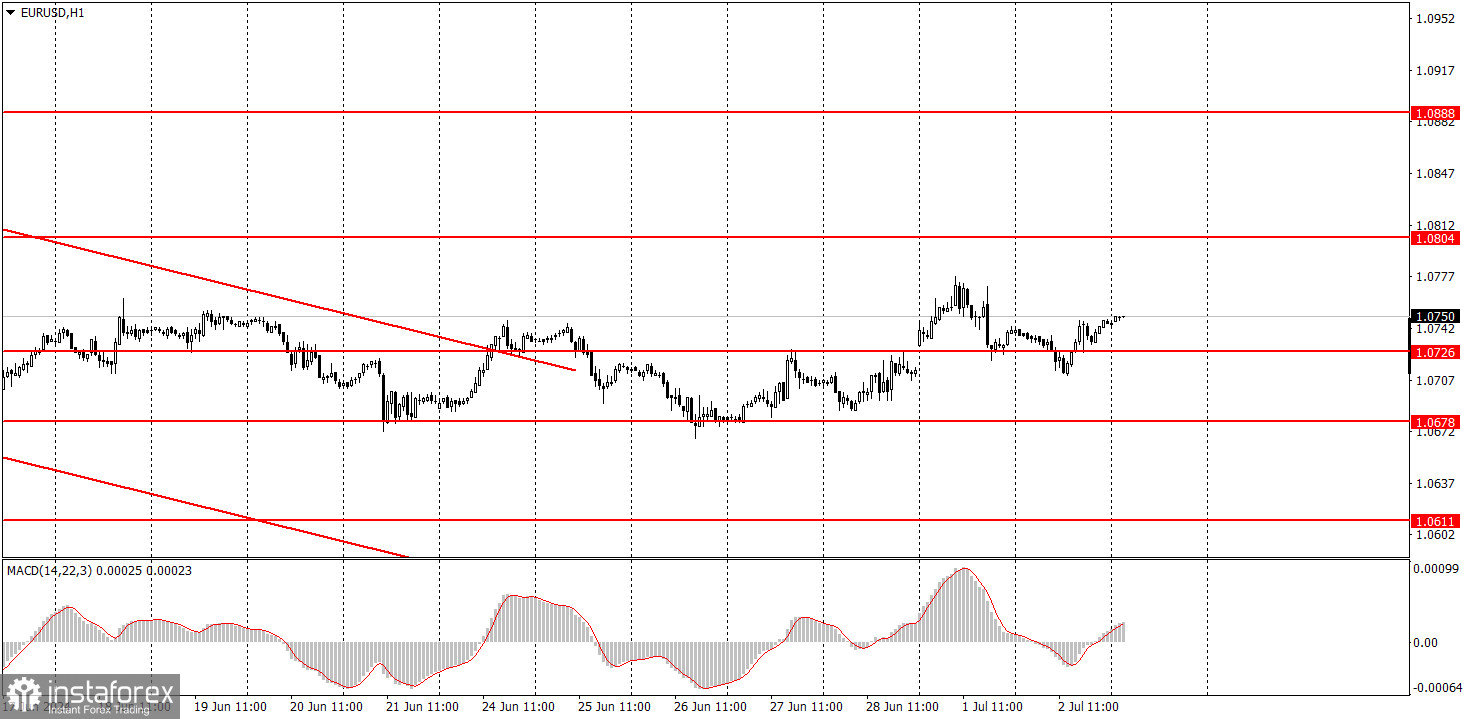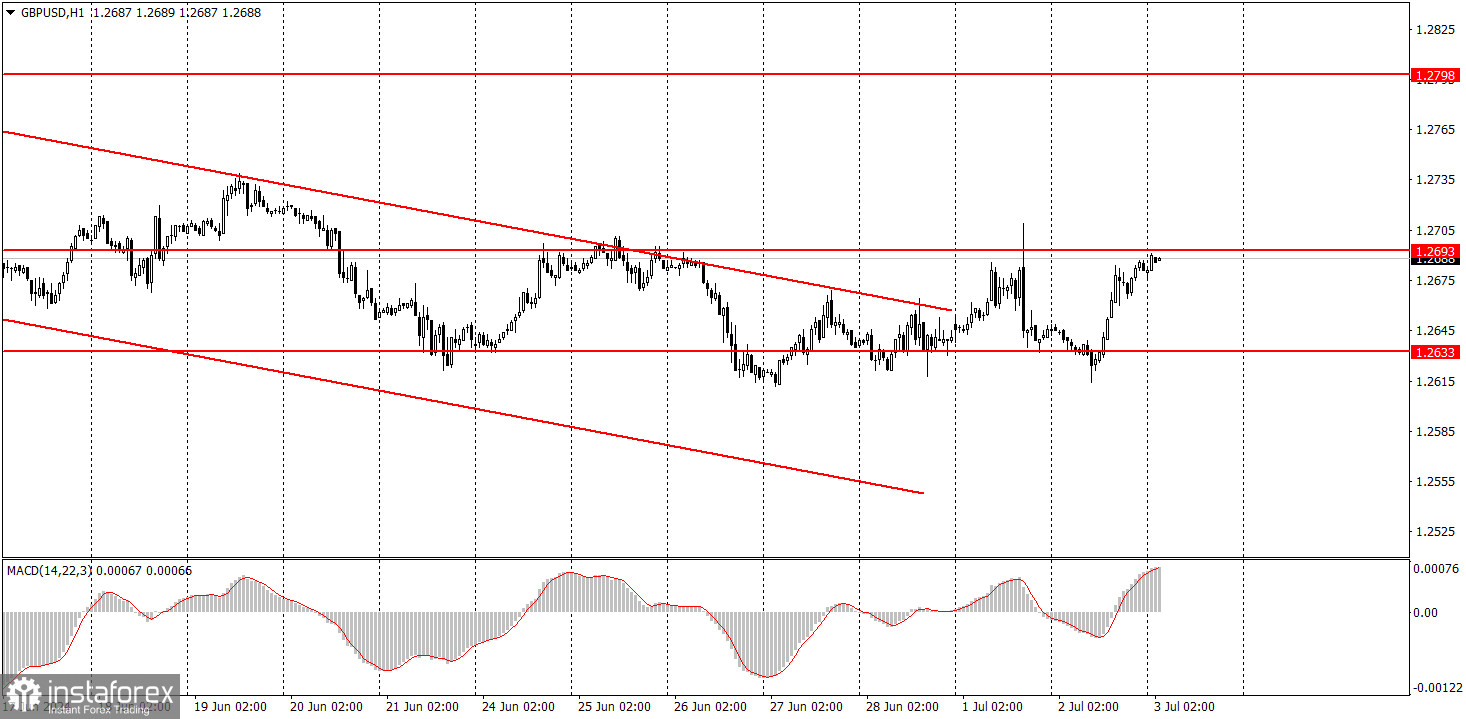Analysis of macroeconomic reports:

There are fewer macroeconomic events on Wednesday, but there will be important reports. However, the last two days showed us that the market, regardless of the macroeconomic background, is not ready to become more active. Both the euro and the pound are experiencing sideways movement. Therefore, we may witness the same pattern today. Standard Services PMI data for June will be published in the Eurozone, Germany, the UK, and the US. These are secondary data. The US will feature more important reports: the ISM Business Activity Index in the services sector and the ADP report on changes in private sector employment (similar to NonFarm Payrolls). These reports may provoke a market reaction, but volatility for both currency pairs remain low.
Analysis of fundamental events:

Among the fundamental events of Wednesday, only the FOMC minutes stands out. Remember that the minutes are always a formality. The central bank head already provides all the necessary information after the meeting, or it is contained in the final communique of the meeting. Therefore, we do not expect any market reaction to the minutes.
General conclusions:
Several important reports will be released on Wednesday. The main reports on today's agenda are the ADP and ISM reports in the US. However, there were also enough important reports and events in the last two days, but they did not provoke a consistent reaction. The market ignored some of them, as they are currently much more interested in the elections in France. It seems that today both currency pairs will continue to move sideways without significant volatility.
Basic rules of a trading system:
1) Signal strength is determined by the time taken for its formation (either a bounce or level breach). A shorter formation time indicates a stronger signal.
2) If two or more trades around a certain level are initiated based on false signals, subsequent signals from that level should be disregarded.
3) In a flat market, any currency pair can produce multiple false signals or none at all. In any case, the flat trend is not the best condition for trading.
4) Trading activities are confined between the onset of the European session and mid-way through the U.S. session, after which all open trades should be manually closed.
5) On the 30-minute timeframe, trades based on MACD signals are only advisable amidst substantial volatility and an established trend, confirmed either by a trendline or trend channel.
6) If two levels lie closely together (ranging from 5 to 15 pips apart), they should be considered as a support or resistance zone.
How to read charts:
Support and Resistance price levels can serve as targets when buying or selling. You can place Take Profit levels near them.
Red lines represent channels or trend lines, depicting the current market trend and indicating the preferable trading direction.
The MACD(14,22,3) indicator, encompassing both the histogram and signal line, acts as an auxiliary tool and can also be used as a signal source.
Significant speeches and reports (always noted in the news calendar) can profoundly influence the price dynamics. Hence, trading during their release calls for heightened caution. It may be reasonable to exit the market to prevent abrupt price reversals against the prevailing trend.
Beginners should always remember that not every trade will yield profit. Establishing a clear strategy coupled with sound money management is the cornerstone of sustained trading success.
 English
English 
 Русский
Русский Bahasa Indonesia
Bahasa Indonesia Bahasa Malay
Bahasa Malay ไทย
ไทย Español
Español Deutsch
Deutsch Български
Български Français
Français Tiếng Việt
Tiếng Việt 中文
中文 বাংলা
বাংলা हिन्दी
हिन्दी Čeština
Čeština Українська
Українська Română
Română

